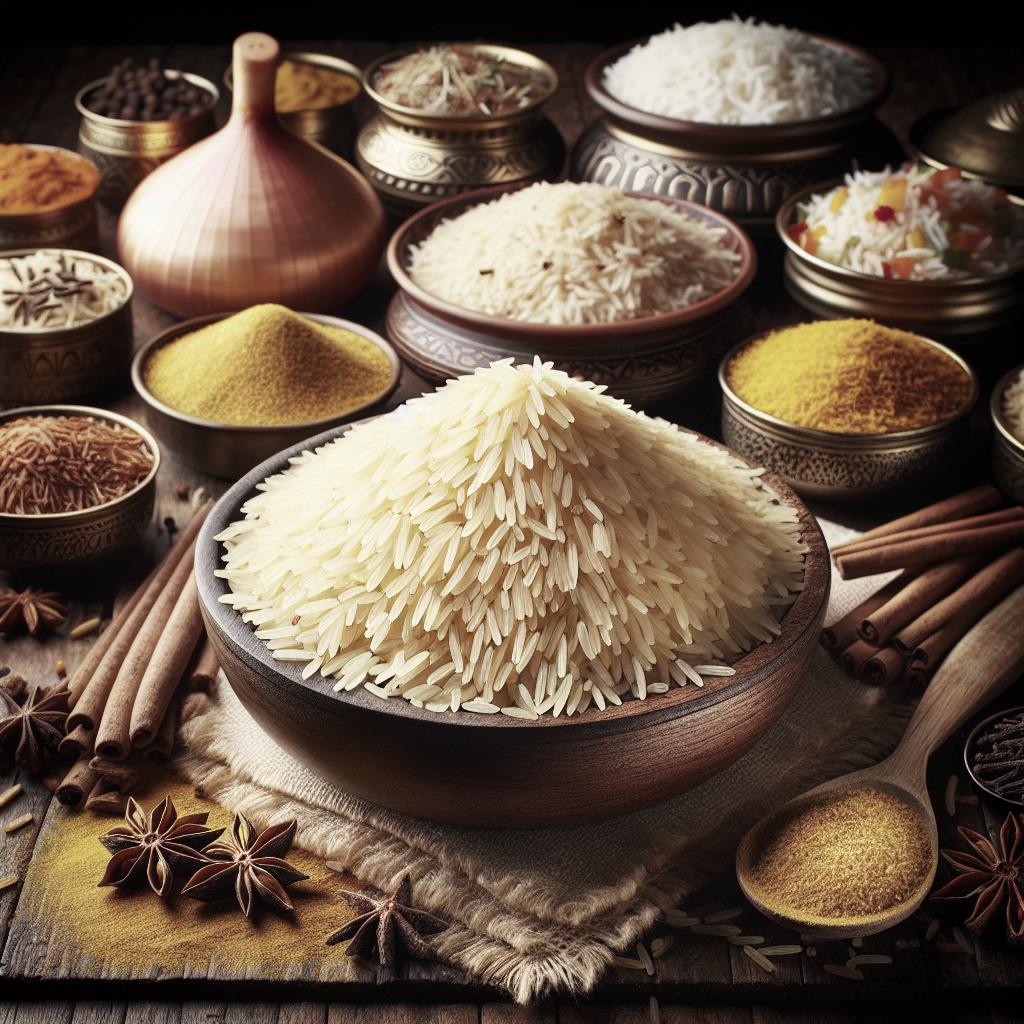“`html
How to Start an Indian Restaurant
Venturing into the vibrant world of Indian cuisine can be a rewarding experience for those passionate about spices, culture, and culinary arts. Starting an Indian restaurant involves deep understanding, strategic planning, and savvy execution. This guide will walk you through the essential steps to launch your Indian restaurant successfully. From understanding the challenges and gauging the market to curating a unique menu and leveraging technology, each stage is crucial. You’ll learn about operations, marketing strategies, and useful design tools like Desygner, all critical to setting up your business. By the end, you’ll have a clearer picture of the dynamic forces at play and how to navigate them. Let’s dive into the rich tapestry of spices and flavors to bring a taste of India to your community.
1. Understanding the Challenges Ahead
Starting an Indian restaurant comes with its own unique set of challenges, including understanding cultural nuances that go into creating authentic Indian dishes. Each region in India presents its own flavor profile and cooking style, and mastering these can take time and practice. It’s critical to comprehend the diversity in Indian cuisine and how to balance authenticity with local taste preferences.
Financial planning is another challenge, involving capital investment, operational costs, and potential contingent expenses. It’s best to create a detailed business model and have contingency plans to mitigate financial risks. Understanding the overheads such as rent, utility bills, and ingredients costs is important for sustainability.
The logistics of securing authentic ingredients could pose a hurdle. Establishing strong relationships with reliable suppliers and vendors will ensure consistency in quality and taste, which are pivotal for customer satisfaction.
2. Gauging Your Market and Competition
Understanding your target market is crucial when starting an Indian restaurant. Research your potential customer base to tailor your offerings to their tastes and preferences. Consider demographics, dining habits, and average spending power.
Analyzing the competition provides insight into what works and what doesn’t. Visit local Indian restaurants, try their dishes, evaluate their customer service, and note their pricing structures. Identifying gaps in the market can offer new opportunity areas where you can differentiate your business.
Staying informed about market trends can give you a competitive edge. By adapting to new technologies or dietary preferences like vegan and gluten-free options, you can widen your customer base and keep your menu modern and appealing.
3. Focusing on Location and Ambience
Your restaurant’s location can greatly impact its success. Choosing a place with ample foot traffic, visibility, and accessibility can boost customer numbers. Consider areas with a high concentration of your target demographic, such as colleges or business districts.
The ambiance of your restaurant plays a significant role in customer retention. Create a setting that reflects Indian culture and cuisine through decor, music, and lighting. An inviting interior can lure customers in and encourage them to return.
Moreover, evaluate the impact of your physical location in terms of nearby competitors. Sometimes, being in close proximity to other Indian eateries can be beneficial, sparking interest in the cuisine as a whole while establishing a restaurant hub.
4. Curating a Distinctive Menu
The heart of a successful Indian restaurant is its menu. Curate a selection that showcases a variety of dishes, keeping a balance between authenticity and creativity. Offering regional specialties can attract diverse crowds eager to explore new culinary experiences.
Menu pricing should reflect the quality and portion size while remaining competitive. Consider the costs of ingredients and operating margins as you finalize a price list. Including popular Indian dishes alongside unique offerings can broaden your appeal to both Indian cuisine connoisseurs and newcomers.
User feedback plays a key role in evolving your menu. Engage with customers to understand their preferences and be prepared to modify dishes based on their suggestions for improvement. This ongoing interaction helps ensure the menu remains dynamic and attractive.
5. Nailing Down Operations and Staffing
Effective operations management is crucial for running a successful restaurant. Implement systems for inventory management, scheduling, and supply ordering to maintain smooth daily operations. Streamlining these processes can enhance efficiency and reduce unnecessary waste.
Equally important is hiring and training competent staff. Skilled chefs, aware of various Indian cooking techniques, are vital to authentic dish preparation. Additionally, wait staff should be knowledgeable about the menu and Indian cuisine to assist customers intelligently.
Create a positive workplace culture by offering competitive wages, training, and career growth opportunities. A happy team translates to excellent customer service, pivotal for positive reviews and repeat business.
6. Marketing Your Indian Restaurant Effectively
An effective marketing strategy will set your restaurant apart. Utilize both digital and traditional marketing mediums to reach a broad audience. Social media platforms like Instagram and Facebook are excellent for showcasing tantalizing dish photographs and engaging with customers.
Partnerships with food delivery services can expand your customer base and increase sales. Additionally, hosting events or offering special discounts can attract new patrons and retain existing ones.
Encourage word-of-mouth referrals by delivering consistently high-quality food and service. Positive customer reviews, especially online, are crucial for boosting credibility and attracting first-time clients.
7. Leveraging Technology for Efficiency
In today’s digital era, integrating technology into your restaurant business can streamline operations and increase efficiency. Implementing a reliable Point of Sale (POS) system can simplify order taking, billing, and inventory management.
Online reservation systems and mobile ordering apps enhance customer convenience, potentially increasing sales. Offering contactless payment options reassures customers about their safety and modernizes your service offering.
Invest in data analytics tools to monitor sales patterns and consumer preferences. This information can aid in decision-making, such as menu adjustments and promotional activities tailored to customer behavior.
8. Making Use of Design Tools Like Desygner
Design tools such as Desygner can be invaluable for creating compelling marketing materials without requiring professional graphic design skills. It’s user-friendly, making it perfect for quickly crafting promotional content such as flyers, social media posts, and newsletters.
Customizing your restaurant logo, menu designs, and branding graphics helps establish a memorable identity. Good design is not solely about aesthetics; it’s about creating an experience that resonates with customers and invites them back.
Regularly updating your marketing materials ensures your branding stays fresh and relevant. Desygner and similar tools make it easier to experiment with different design elements and layouts to see what resonates best with your customers.
9. Concluding Thoughts on Starting an Indian Restaurant Business
Launching an Indian restaurant is a challenging yet rewarding endeavor. Understanding your market, meticulous planning, and effective execution are crucial steps on this culinary journey. Paying attention to the interplay of location, menu, operations, and marketing ensures your restaurant stands out in a competitive field.
Innovative use of technology, comprehensive staff training, and distinct branding are powerful tools that can give you a competitive edge. By constantly evolving and adapting to customer feedback and market trends, your restaurant can thrive and become a beloved dining spot in your community.
Summary of Main Points
| Area | Brief Summary |
|---|---|
| Challenges | Understanding cultural nuances, financial planning, ingredient logistics. |
| Market and Competition | Research target market; analyze and differentiate from competitors. |
| Location and Ambience | Select high-traffic areas; ensure the ambiance reflects Indian culture. |
| Menu | Create a balanced menu of authenticity and creativity; incorporate feedback. |
| Operations and Staffing | Establish efficient operations and hire trained, competent staff. |
| Marketing | Utilize digital/traditional methods; encourage referrals. |
| Technology | Implement systems for efficiency including menu, POS, and data analytics. |
| Design Tools | Use Desygner for branding and marketing materials. |
“`


